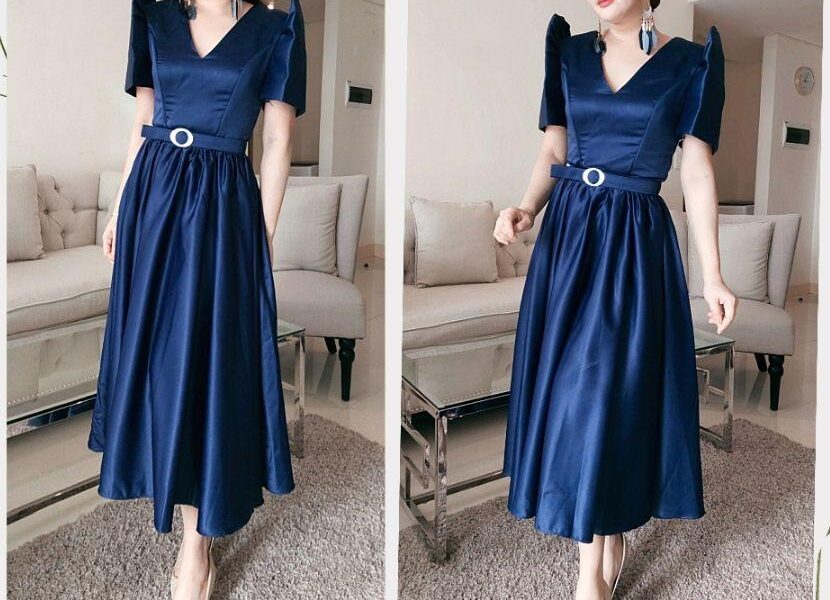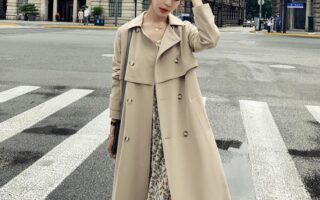In the vibrant tapestry of Filipino culture, tradition and modernity often weave together to create something truly extraordinary. Among the most captivating expressions of this fusion is the modern Filipiniana dress—a contemporary iteration of the beloved baro’t saya that embodies the rich heritage of the Philippines while reflecting the dynamic spirit of today’s society. As we explore the evolution of this iconic attire, one cannot help but appreciate how skilled designers and fashion enthusiasts are reimagining timeless elements, infusing them with innovative techniques, sustainable practices, and fresh aesthetics. This article delves into the journey of the modern Filipiniana, celebrating its unique blend of cultural significance and artistic exploration in a world that continuously shifts and evolves. Join us as we unravel the stories behind this sartorial movement and discover how it honors the past while embracing the future.
Table of Contents
- Exploring the Evolution of Modern Filipiniana Dress
- Key Fabrics and Textiles That Define Contemporary Styles
- Playing with Colors and Patterns in Modern Design
- Accessorizing Filipiniana: Enhancing Traditional Elegance with a Modern Twist
- Q&A
- Key Takeaways
Exploring the Evolution of Modern Filipiniana Dress
The journey of modern Filipiniana dress is a captivating narrative woven from the threads of history, culture, and artistry. What was once a traditional garb adorned with intricate embroidery and regional textiles has transformed into a versatile expression of identity. Today, designers are bridging the gap between heritage and innovation, reinventing classic styles such as the Baro’t Saya and the Panuelo, while incorporating contemporary fabrics and silhouettes. This evolution reflects not just a change in fashion, but also a dialogue with the past, where each piece tells a story of resilience and adaptation.
As we delve into this vibrant trend, we encounter various elements that define modern Filipiniana dress:
- Sustainable Fabrics: A movement toward eco-friendly materials showcases a commitment to the environment.
- Fusion of Styles: The blending of Western and Filipino aesthetics creates garments suitable for diverse occasions.
- Emphasis on Local Artisanship: Collaborations with local artisans infuse uniqueness and support cultural heritage.
To visualize this evolution, consider the following table showcasing key styles and their modern interpretations:
| Traditional Style | Modern Interpretation |
|---|---|
| Baro’t Saya | Maxi dresses with bold prints and breathable fabrics |
| Panuelo | Stylish capes and overlays paired with contemporary cuts |
| Balintawak | Chic two-piece sets with more streamlined silhouettes |
Key Fabrics and Textiles That Define Contemporary Styles
The modern Filipiniana dress is an embodiment of cultural pride, seamlessly merging traditional heritage with contemporary elegance. Key fabrics and textiles play a monumental role in defining its style, with each material telling a unique story that resonates with both the past and present. Cotton emerges as a favorite for its breathability and versatility, ideal for casual or formal settings. Silk elevates the sophistication of the dress, often used in formal occasions to add a luxurious sheen. The inclusion of organza or tulle provides an ethereal floatiness, perfect for creating layers that add depth and dimension.
Moreover, artisans are increasingly experimenting with digital prints and embroidered details, allowing for a vibrant display of creativity on natural fibers. The trend is also leaning towards sustainable textiles, showcasing eco-friendly materials such as bamboo and hemp, which resonate with the modern consumer’s consciousness. These fabrics not only enhance comfort but also signify a commitment to responsible fashion. Here’s a glimpse of the key textiles that are shaping the modern Filipiniana dress:
| Fabric | Characteristics | Usage |
|---|---|---|
| Cotton | Breathable, versatile | Casual to formal |
| Silk | Luxurious, shiny | Formal occasions |
| Organza | Lightweight, crisp | Layering, embellishments |
| Bamboo | Sustainable, soft | Everyday wear |
Playing with Colors and Patterns in Modern Design
In the realm of contemporary fashion, the modern Filipiniana dress emerges as a vibrant canvas for experimentation with colors and patterns. Designers are pushing boundaries by blending traditional elements with bold, innovative hues that speak to the current aesthetic landscape. This fresh approach can be seen in a variety of styles, from the use of lively pastels to striking jewel tones, creating garments that not only honor heritage but also celebrate individuality. The incorporation of patterns—be it geometric shapes, floral motifs, or abstract designs—adds layers of visual interest that challenge the conventional perception of the Filipiniana.
Moreover, the use of different fabrics plays a significant role in this revival. By combining textures such as silk, linen, and cotton, designers create a multi-dimensional effect that enhances the overall design. A closer look reveals how these dresses can showcase stunning contrasts and harmonious blends, appealing to a diverse audience. The meticulous attention to detail is further exemplified in thoughtful embellishments, such as intricate beadwork or modern embroidery, which pay homage to traditional craftsmanship while embracing contemporary trends.
| Element | Traditional Style | Modern Interpretation |
|---|---|---|
| Fabrics | Jusi, Piña | Silk, Linen |
| Colors | Earth Tones | Vibrant Pastels, Jewel Tones |
| Patterns | Floral Prints | Geometric, Abstract |
| Embellishments | Manual Stitching | Modern Embroidery, Beadwork |
Accessorizing Filipiniana: Enhancing Traditional Elegance with a Modern Twist
Filipiniana attire, with its rich heritage and intricate designs, has long been a symbol of cultural pride. To elevate this traditional elegance, modern accessorizing plays a pivotal role. By choosing items that marry heritage with contemporary style, one can create a vibrant look that resonates with both history and modernity. Consider incorporating:
- Statement Jewelry: Oversized earrings or chunky necklaces can add a dramatic flair to an otherwise traditional outfit.
- Stylish Footwear: Swap classic sandals for chic ankle boots or elegant pumps to ground the outfit in a modern context.
- Unique Bags: Opt for clutches or crossbody bags with modern prints or materials to make a bold statement.
Layering is another effective way to infuse a fresh perspective into the classic silhouette of the Filipiniana dress. Lightweight shawls or cropped jackets can enhance the overall look while offering a practical touch. Mix textures and patterns to create depth in your ensemble. Consider a simple chart highlighting popular layering combinations:
| Layering Option | Effect |
|---|---|
| Floaty Kimono | Adds motion and femininity |
| Denim Jacket | Creates a casual chic vibe |
| Fitted Blazer | Gives a polished, sophisticated appearance |
Q&A
Q&A on Modern Filipiniana Dress
Q1: What is Filipiniana dress, and how has it evolved over time?
A1: Filipiniana dress refers to traditional Filipino attire, often characterized by its intricate designs, vibrant colors, and cultural significance. Historically, it was worn by women during formal occasions. The dress has evolved from the traditional “Baro’t Saya” to incorporate modern cuts, fabrics, and designs that reflect contemporary aesthetics while honoring cultural heritage. Today’s modern Filipiniana may feature simplified silhouettes and unexpected materials, making it accessible for a wide range of events.
Q2: What are some key features of modern Filipiniana dress?
A2: Modern Filipiniana dress typically includes features such as the use of natural fibers like Piña or Jusi, innovative draping techniques, and the inclusion of embellishments like embroidery or beadwork. While the classic butterfly sleeves and flowing skirts remain popular, many designers also play with asymmetrical lines, minimalist silhouettes, and bold prints, marrying traditional elements with modern fashion sensibilities.
Q3: Who are some prominent designers in the modern Filipiniana fashion scene?
A3: Several designers are making waves in the modern Filipiniana landscape, including the likes of Inno Sotto, known for his elegant interpretations, and Francis Libiran, who often blends high fashion with cultural motifs. Other emerging talents, such as Bea Valdes and Rajo Laurel, are also contributing to the discourse by infusing contemporary elements into traditional garments, ensuring that modern Filipiniana remains relevant and stylish.
Q4: How is modern Filipiniana dress received in local and international fashion circles?
A4: In the Philippines, modern Filipiniana attire is often celebrated at cultural events, festivals, and beauty pageants. Internationally, it garners attention in fashion weeks and global showcases, where the fusion of traditional Filipino elements with contemporary designs is appreciated. The garments are increasingly recognized for their craftsmanship and unique storytelling, helping to position Filipino culture on the global fashion map.
Q5: What occasions are suitable for wearing modern Filipiniana dress?
A5: Modern Filipiniana dress can be worn for a variety of occasions, from formal events like weddings and galas to cultural celebrations and national holidays. Many women also don modern Filipiniana for casual outings or work functions, underscoring its versatility and the seamless blend of heritage with everyday fashion. As a statement of pride and identity, wearing this attire in any setting helps keep Filipino culture alive.
Q6: How can individuals incorporate modern Filipiniana into their wardrobes?
A6: Incorporating modern Filipiniana into a wardrobe can be as simple as selecting pieces that embellish your personal style. Opt for tailored blouses with butterfly sleeves paired with trousers, or embrace full-length dresses adorned with traditional patterns. Accessories like contemporary jewelry or woven bags can enhance the look. Ultimately, the key is to blend these elements with personal flair, creating a unique representation of modern Filipino identity.
Q7: What does wearing modern Filipiniana symbolize in today’s society?
A7: Wearing modern Filipiniana today symbolizes a deep appreciation for Filipino heritage while embracing progress and individuality. It represents a celebration of identity, culture, and history, allowing individuals to connect with their roots while adapting to global influences. This amalgamation emphasizes pride in cultural roots while fostering an inclusive narrative that resonates across generations.
Key Takeaways
As we journey through the vibrant tapestry of modern Filipiniana dress, it becomes evident that these garments are more than just fabric and thread; they are living testimonies of a rich cultural heritage. Each stitch tells a story of resilience and adaptation, reflecting the beautiful interplay between tradition and contemporary influences. In embracing modern Filipiniana, we celebrate not only the artistry of Filipino craftsmanship but also the spirit of innovation that propels it forward.
As fashion continues to evolve, the Filipiniana stands as a symbol of identity and pride, inviting both new and familiar narratives to weave into its narrative. Whether donned at a festive gathering or adapted into everyday wear, the modern Filipiniana dress holds the power to connect generations, instilling a sense of belonging in an ever-changing world. In this lively evolution, we find a celebration of the past and an embrace of the future, where every thread weaves together the stories of countless individuals who dare to dream and define what it means to be Filipino today. So, let us wear these creations with pride, for in them lies a legacy that continues to dazzle and inspire.



